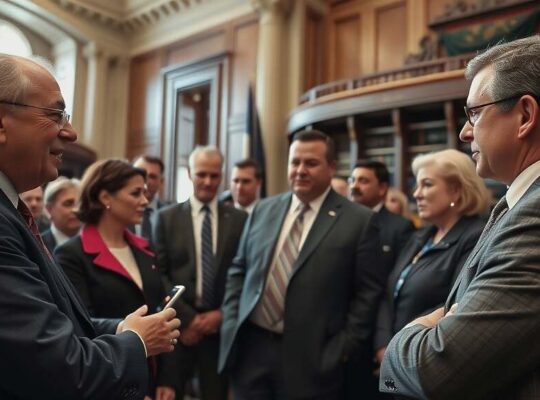The Federal Reserve’s Federal Open Market Committee (FOMC) announced a reduction in the benchmark interest rate on Wednesday, bringing it to a range of 3.75% to 4.0%. While the decision was largely anticipated, it wasn’t without internal dissent, highlighting growing divisions within the committee as the central bank navigates increasingly uncertain economic conditions.
Two members of the FOMC publicly dissented from the move. Stephen Miran advocated for a more aggressive 50-basis-point reduction, signaling concerns about the potential for slowing growth, while Jeffrey Schmid argued for a pause in rate adjustments, likely reflecting anxieties about prematurely loosening monetary policy amidst persistent inflationary pressures.
The Fed’s accompanying statement characterized recent economic activity as expanding at a moderate pace. While employment growth has decelerated this year, the unemployment rate, though slightly elevated, remains historically low through August. Consumer price inflation, however, has risen since the beginning of the year and persists above the Fed’s target.
The committee reiterated its commitment to adjusting monetary policy “if risks emerge that could impede the attainment of the Committee’s objectives”. This phrasing, a standard element of FOMC statements, underscored the inherent fragility of the economic outlook and the potential for future policy shifts. The Fed indicated it will continue to monitor a broad range of data, including labor market conditions, inflation pressures and inflation expectations, indicating increased sensitivity to incoming information.
The reduction in the benchmark rate, while aimed at cooling inflation, inevitably carries risks. Higher interest rates typically dampen economic investment and negatively impact stock markets. Conversely, maintaining rates at excessively low levels risks fueling further inflationary spirals. The internal disagreements within the FOMC expose the complexity of balancing these conflicting objectives and raise questions about the effectiveness and long-term consequences of the Fed’s current policy course. The diverging opinions suggest a lack of consensus regarding the optimal path for monetary policy, potentially foreshadowing more volatile decisions and increased market uncertainty in the months ahead.












